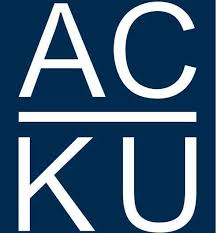Турестанскій Альбмъ Часть Археологическая по расноряжеиію Турkecтанскаго генералъ-губернатора генералъ-адъютанта 1871-1872 = Turkestan Album, Ethnographic Part.
Material type: TextLanguage: Russian Publication details: [Place of publication not identified] : [Publisher not identified], 1872.Description: [80] unnumbered pages : illustrations ; 30 cmSubject(s): LOC classification:
TextLanguage: Russian Publication details: [Place of publication not identified] : [Publisher not identified], 1872.Description: [80] unnumbered pages : illustrations ; 30 cmSubject(s): LOC classification: - Pamphlet DK854. T973 1872
| Item type | Current library | Call number | Status | Notes | Date due | Barcode | Item holds | |
|---|---|---|---|---|---|---|---|---|
 Monograph
Monograph
|
Afghanistan Centre at Kabul University | Pamphlet DK854.T973 1872 (Browse shelf(Opens below)) | Available | The digital file donated from Library of Congress-World Digital Library, PDF is available in ACKU. | 3ACKU000506682 |
Cover title.
Russian language.
“Turkestan Album, Ethnographic Part : In the mid-to-late 19th century, the Russian Empire expanded into Central Asia, annexing territories located in present-day Uzbekistan, Kazakhstan, Turkmenistan, Tajikistan, and Kyrgyzstan. Tsar Alexander II approved the establishment of the governor-generalship of Russian Turkestan in 1867. General Konstantin Petrovich von Kaufman (1818–82), the first governor-general, commissioned the Turkestan Album, a comprehensive visual survey of the region that includes some 1,200 photographs, along with architectural plans, watercolor drawings, and maps. The work is in four parts, spanning six large, leather-bound volumes: “Archaeological Part” (two volumes); “Ethnographic Part” (two volumes); “Trades Part” (one volume); and “Historical Part” (one volume). The compiler of the first three parts was Russian Orientalist Aleksandr L. Kun, who was assisted by Nikolai V. Bogaevskii. Production of the album was completed in 1871–72. Presented here is the “Ethnographic Part,” containing 491 individual photographs on 163 plates. The photographs show individuals representing the Kyrgyz, Kazak, Uzbek, Sart, Tajik, Iranian, Gypsy, Indian, Afghan, Arab, and Jewish populations (Plates 1–33). Daily life and rituals, including weddings, horse racing, religious activities, clothing and dress, along with occupational portraits of musicians, street vendors, and others are covered in Plates 34–91. Plates 92–93 show views of villages and cities, including Samarkand and Tashkent, street vendors, and other commercial activities. The Library of Congress acquired a complete set of the volumes in 1934; other surviving copies are in the National Library of Uzbekistan and the National Library of Russia”—copied from website.
The Library of Congress donated copies of the digitized material (along with extensive bibliographic records) containing more than 163,000 pages of documents to ACKU, the collections that include thousands of historical, cultural, and scholarly materials dating from the early 1300s to the 1990s includes books, manuscripts, maps, photographs, newspapers and periodicals related to Afghanistan in Pushto, Dari, as well as in English, French, German, Russian and other European languages ACKU has a PDF copy of the item.
Includes bibliographical references.
Russian
